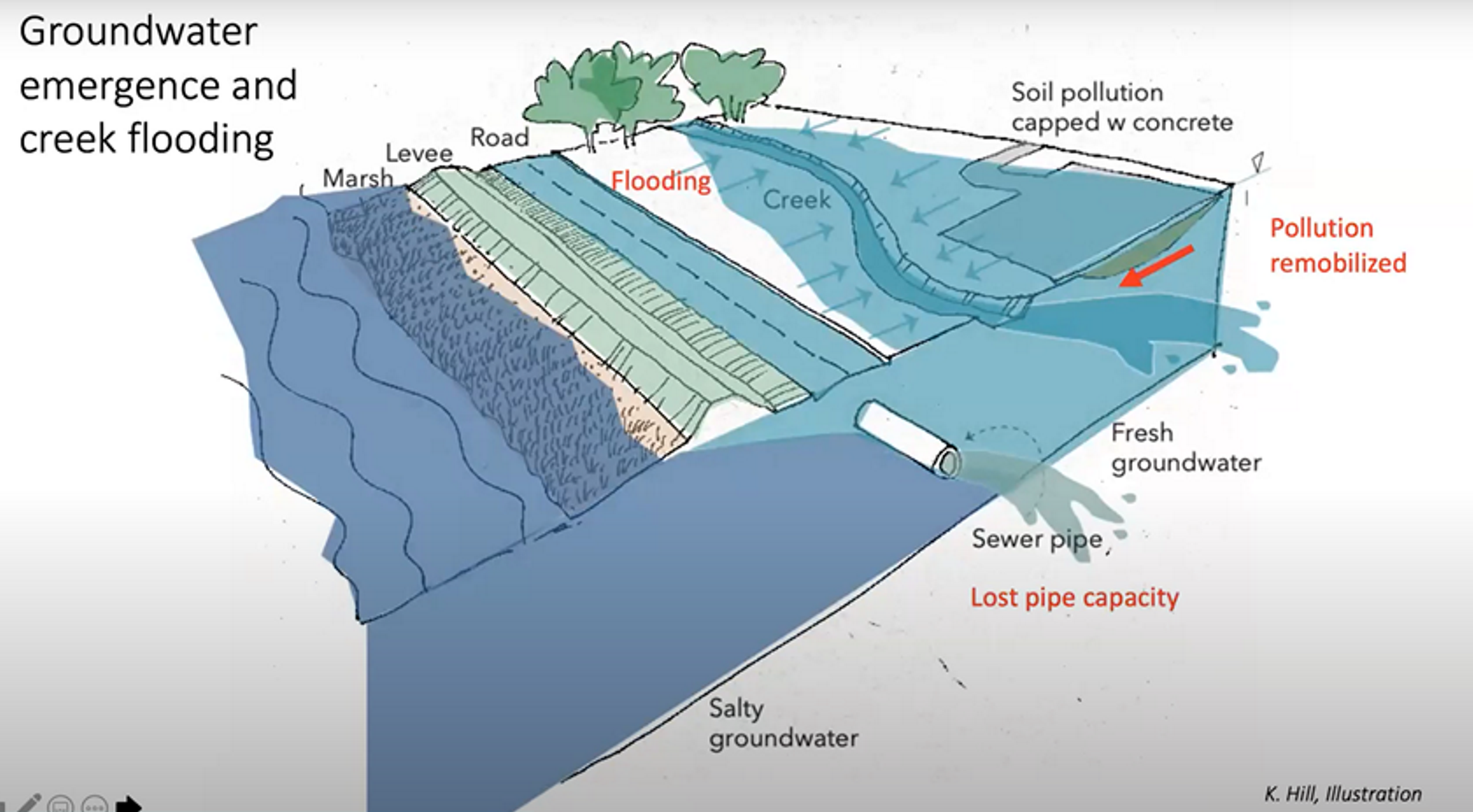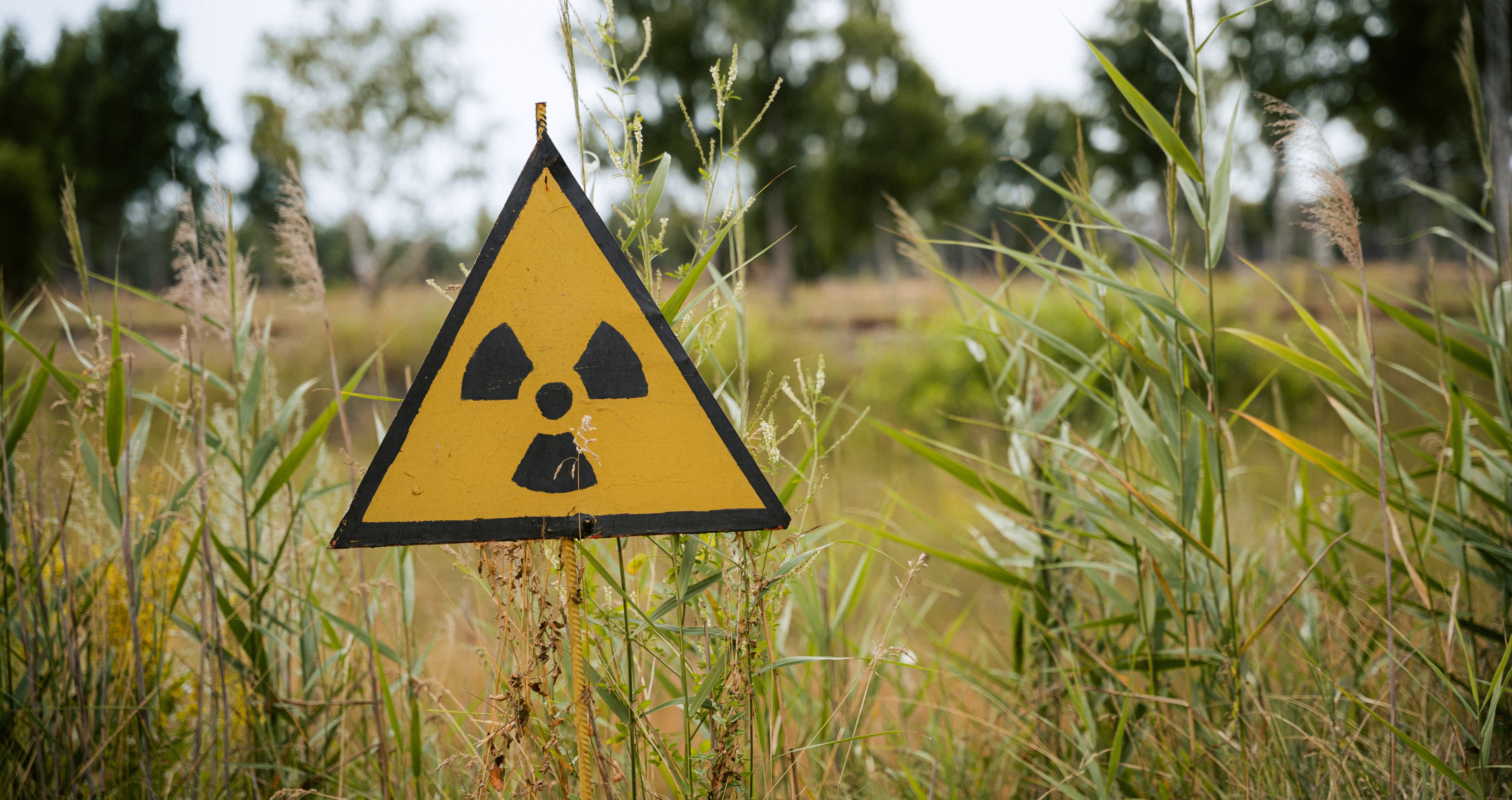By Tiffany Ngo
Shoreline communities in the Bay Area are suffering the worst impacts from climate change-induced sea level rise. These areas, which are primarily populated by historically disenfranchised BIPOC (Black, Indigenous, and people of color) and working class communities, have disproportionately higher rates of chronic disease, including asthma, and lower birth weights and life expectancy than neighboring areas. Decades of government-led exclusionary housing and redlining, coupled with disinvestment and inaction, left these communities vulnerable to industrial and military-grade toxic and radioactive waste exposure. With climate change, shoreline communities must grapple with increased contact with noxious substances mobilized by sea level and groundwater rise. Contaminants are being driven up into the community and simultaneously washed out into San Francisco Bay.
On December 8th and 9th, 2021, shoreline communities, environmental and community-based organizations, researchers, experts, and government agency representatives met for the two-day Sea Level Rise & Shoreline Contamination Regional Workshop.
Environmental justice organizations representing shoreline communities including Communities for a Better Environment in Richmond (CBE), the Richmond Shoreline Alliance (RSA), Marin City Climate Resilience and Health Justice (MCCRHJ), the West Oakland Environmental Indicators Project, and Greenaction for Health and Environmental Justice talked about the pollution in their neighborhoods and the severe health consequences resulting from decades of environmental racism and lack of local government intervention. The toxic and radioactive waste that remains in the area is a dangerous, enduring environmental injustice for the vulnerable communities living and working there. During his presentation, Andrés Soto (CBE, RSA) reflected on the region’s history and its particular impact on Richmond: “There’s a long legacy of industrial development in the early and mid-20th century along the entire Bay shoreline impacting many communities, but Richmond, because of the refinery, because of the railroads, because of the shipyards and all the ancillary industry that went along with it, got more than its fair share, and we’re still coming to grips with that legacy.”
That legacy is felt today, exacerbated by non-existent or degraded infrastructure due to years of disinvestment by the local government. In a moving account from Ms. Terrie Green (MCCRHJ), she spoke of her daughter being forced to wade through contaminated floodwaters to return to Marin City during the October 24th, 2021 storm: “Folks have been wading in this water for 80 years.”
The health concerns communicated during the workshop are not unfounded. Using urine samples and Geographic Information Systems (GIS), Dr. Ahimsa Porter Sumchai of the Hunters Point Biomonitoring Foundation and Medical Screening Clinic found that the level of radioactive contamination in the shipyard shoreline corresponds almost exactly to the substances detected in residents and workers. Her mapping also showed that locations with the most concentrated radioactive contamination correlate with cancer cases in the area.
In a presentation about the interactions of sea level rise with groundwater, earthquakes, pipes, and contaminated soil, UC Berkeley professor Dr. Kristina Hill showed the different scenarios in which hazardous contaminants can become mobilized and enter homes and public spaces. Dr. Hill explained that groundwater, which is lighter than saltwater, rises with the sea, spreading hazardous material underground through the Bay Area’s soil layers and chronically broken pipe systems into unsuspecting homes. She emphasized throughout her presentation that sea level and groundwater rise is happening now, and showed pictures of groundwater bubbling out of manholes taken in December 2021.

The last part of the workshop connected shoreline communities with agency representatives from the Environmental Protection Agency (EPA), the Department of Toxic Substances Control (DTSC), the Regional Water Quality Control Board (RWQCB), and the San Francisco Bay Conservation & Development Commission (BCDC). Shoreline community members expressed their hurt, anger, and distrust after being subjected to air, water, and soil pollution with little or no assistance.
Their demands are straight-forward and insist upon ensuring accountability, transparency, and the health of the communities. They demand that:
- Local, regional, and state governments prioritize cleanup near environmental justice communities;
- Toxic and radioactive waste be completely cleaned up, not just covered up;
- The government work closely with shoreline residents, the community, and environmental justice organizations for all contamination cleanup decisions, including the best treatment and/or disposal options;
- All contaminated site cleanup plans use the latest sea level rise projections;
- Housing will not be built on hazardous and/or radioactive waste sites near the shoreline unless the areas are first cleaned up with community oversight and independent testing to the highest Residential Standards;
- Comprehensive, regular, and direct health studies, led and approved by impacted shoreline communities of local residents, workers, and regular site users, be conducted to determine if contaminants are accumulating and/or harming community members;
- In limited circumstances where contamination cannot be completely moved away from shoreline areas, robust containment is utilized;
- And that each community be allocated resources and funding in order for shoreline communities to fully participate in the cleanup and oversight of these activities.
So what can you do to help?
- As an individual, you can reach out to the organizations referenced in the article and involved in the workshop. The SF Bay Shoreline Contamination Cleanup Coalition (sfbayshorelineccc.org) meets regularly and can always use your community resources and skills.
- Attend the Sierra Club’s Bay Area Sea Level Rise committee to contribute to and advocate for this work: sign up for their listserv and contact chair Arthur Feinstein at arthurfeinstein@earthlink.net with any questions.
- Contact your representatives. These issues are urgent — people’s lives have been and are increasingly at risk. Contamination cleanup needs to happen NOW. We must demand that the Infrastructure Bill’s $21 billion, dedicated to pollution cleanup, goes to the most vulnerable shoreline communities as reparations for racist government policies that deliberately placed these communities in direct harm.
- Talk about this issue — inform your own community in the Bay Area, reach out to publications, podcasts, whatever media you like to consume. More people need to be aware. I contacted my two favorite podcasts to highlight this issue.
Waiting to remedy this issue is not an option for these communities already suffering from climate change impacts. As Dr. Hill stated plainly at the close of her presentation, “This is not 2050, this is today.”
Resources:
- To screen for contaminants and find resources in your community, check out this Shoreline Community Tools and Resources page, which has links to databases and maps, reports, community-based orgs and NGOs, government agencies, academic and research organizations, and grants and funding opportunities.
- SF Bay Shoreline CCC’s position statement
- SLR & Shoreline Contamination Regional Workshop recordings: Day 1 and Day 2
- SF Bay Shoreline CCC website
Tiffany Ngo is a member of the Sierra Club Southern Alameda County Group (SACG) and the Climate Reality Project Bay Area Chapter (CRBA). The SF Bay Shoreline Contamination Cleanup Coalition, CRBA, and Sierra Club SACG Chair and SF Bay Chapter Vice Chair Martha Kreeger contributed significantly to this article.
Photo Credits
Top: Photo by Kilian Karger on Unsplash.
Bottom: Image from Dr. Kristina Hill's presentation at the Sea Level Rise and Shoreline Contamination Regional Workshop.
